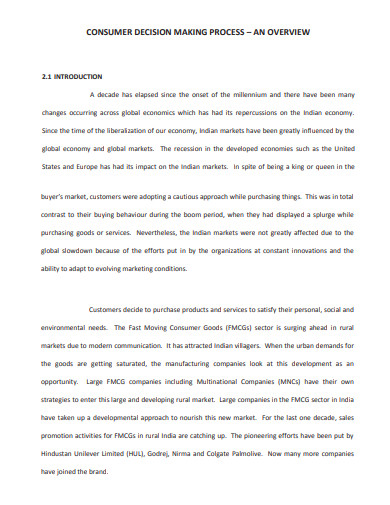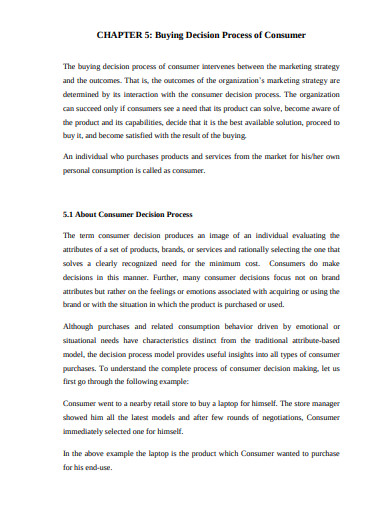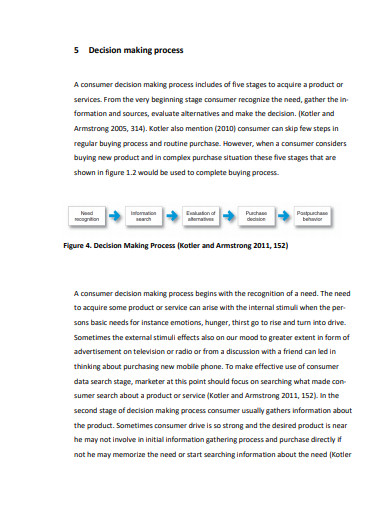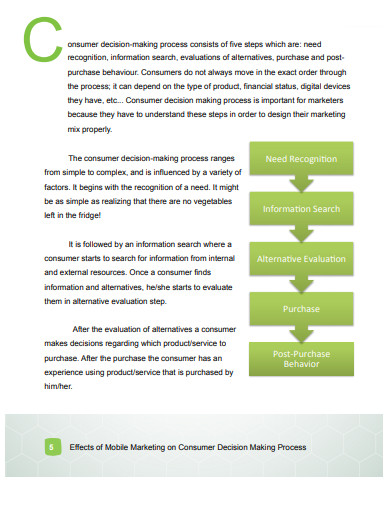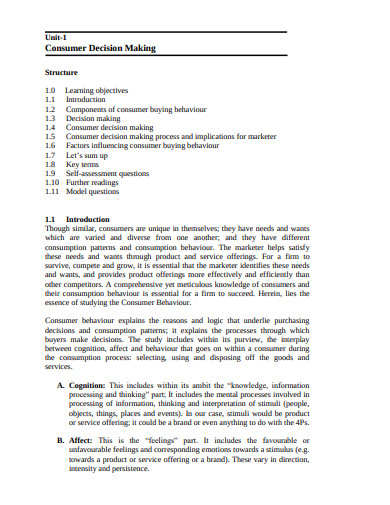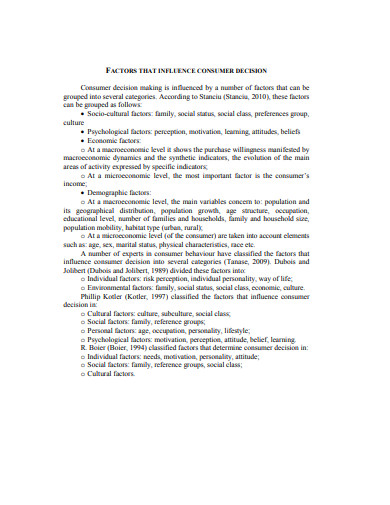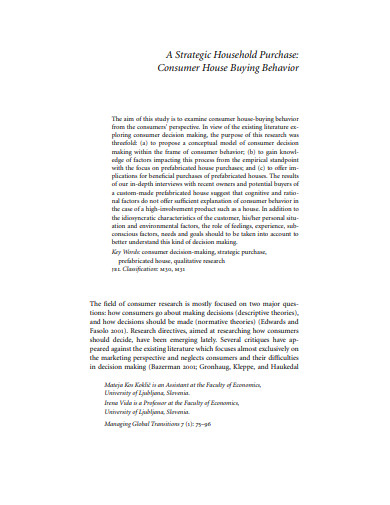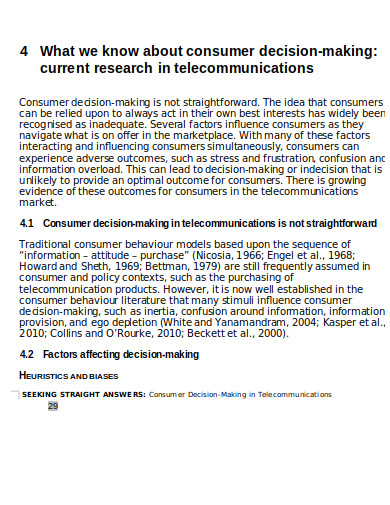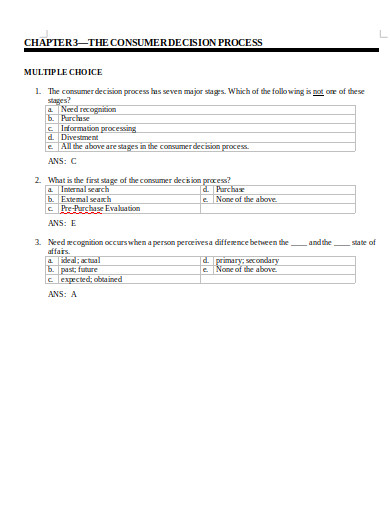9+ Consumer Decision Making Process Examples to Download
The theory of the consumer decision-making process was given and established by John Dewey in 1910. Dewey specified in his theory that a consumer’s decision for choosing a particular product is influenced by their different needs, and requirements. Next, he also adds that their decisions are also influenced by the information they have about the products and the alternative products in the market, price, etc.
What is the Purpose of the Consumer Decision Making Process?
The consumer behavior to choose any particular product in the market is a very complex thing to study and understand. And while running a business to understand the consumers is the most crucial thing. Here comes the stage when the consumer decision-making process can help the businessmen to understand the market and adopt measures to make the products suitable to attract more consumers.
The main purpose of the consumer decision-making process is to understand the different needs of different consumer groups understanding its 5 stages. Those 5 stages include Recognition of the Need, Information Search, Evaluating the Alternatives, Purchasing Decision, and the Post-purchase Behavior. These 5 stages make the complex behavior and attitude of the consumers by comparing and evaluating the information gathered. This study and evaluation also help the businessmen to produce their products and services with some unique selling point (USP) than others.
9+ Consumer Decision Making Process Examples in PDF | DOC
1. Consumer Decision Making Models and Strategies
2. Consumer Decision Making Process
3. Buying Decision Process of Consumer
4. Consumer Decision Making Process
5. Mobile Marketing Decision Making
6. Consumer Decision Making Example
7. Factors that Influence Consumer Decision Making Process
8. Consumer House Buying Behaviour
9. Consumer Decision Making in Telecommunication
10. Consumer Decision Process Questionnaire
What are the Different Stages of the Consumer Decision Making Process?
John Dewey in the 20th century has minutely defined 5 prominent stages of consumer decision making in or before adopting any product or services in the market. These stages help study consumer behavior for buying different products and services. The 5 stages of the process are categorized and described below:
Stage 1: Recognition of the Need
Recognition of the needs is a situation when the consumer decides that he or she is exactly in need of some product or services. The consumer feels like some gap in their life that has taken place due to the lack of something that they feel to cope with some needs. A business can reach the peak of success if they manufacture their products and services according to the needs of their consumers.
Defining the target audience for your products and services in the most important thing in the business. Because the target group can give you ideas on how to determine their interest. If you are a manufacturing car you know that people require transportation and so do you base the number of products on the assumed needs of the target audience. This step can be applied in any other business to avoid loss.
Stage 2: Information Search
The information that one has or receives is a variable that continuously keeps on changing over time with different advertisements and information layering one with the other. Interested consumers for any product or service wish to obtain more information as more they get to satisfy their need for knowledge. Information sources can be many other than advertisements and promotions, like recommendations and word of mouth, etc. Companies and organization use several sources to inform their consumers properly so that the consumer make proper choice and decisions and do not regret it. Following are some of the sources of providing information:
- Commercial Source: Media is a very powerful source of information that intakes several platforms, like advertisements by a-visual, visual, and print mode, promotional campaigns, sales or packaging, etc.
- Personal or Recommended Sources: The information that comes from word of mouth, relatives, friends, sometimes as statements and sometimes as recommendations.
- Public Sources: Sources like radio, newspaper and other print and visual sources are easily available and accessible.
- Experiential sources: Experimental sources refers to the situations in which people themselves try and experience some products.
Stage 3: Evaluation of Alternatives
Evaluating the alternatives refer to the process of checking and analyzing if there is any product of the same sort in the market besides what your company is selling. If consumers can have the idea of what they want they start seeking other options to choose the most convenient and comfortable one.
Their decision for choosing one particular product would be based on several factors like the price of the product, quantity, quality, etc. The evaluation results may affect the choice of the consumers based on what they need. The decision of choosing some specific product and brand can also be the outcome of a comparative study of some products.
Stage 4: Purchasing Decision
Stage 5: Post Purchase Behavior and Attitude
The post-purchase period is the observation period for analyzing whether the product was useful to consumers or not. If it could meet the needs and could stand up to the expectation of the consumers or not, etc. If the response from the target audience comes positive they would try to work more on influencing sources to impact the purchase decisions of the consumers. And if they get the negative response they would try to work on it to make the products consumer-friendly and ideal.




